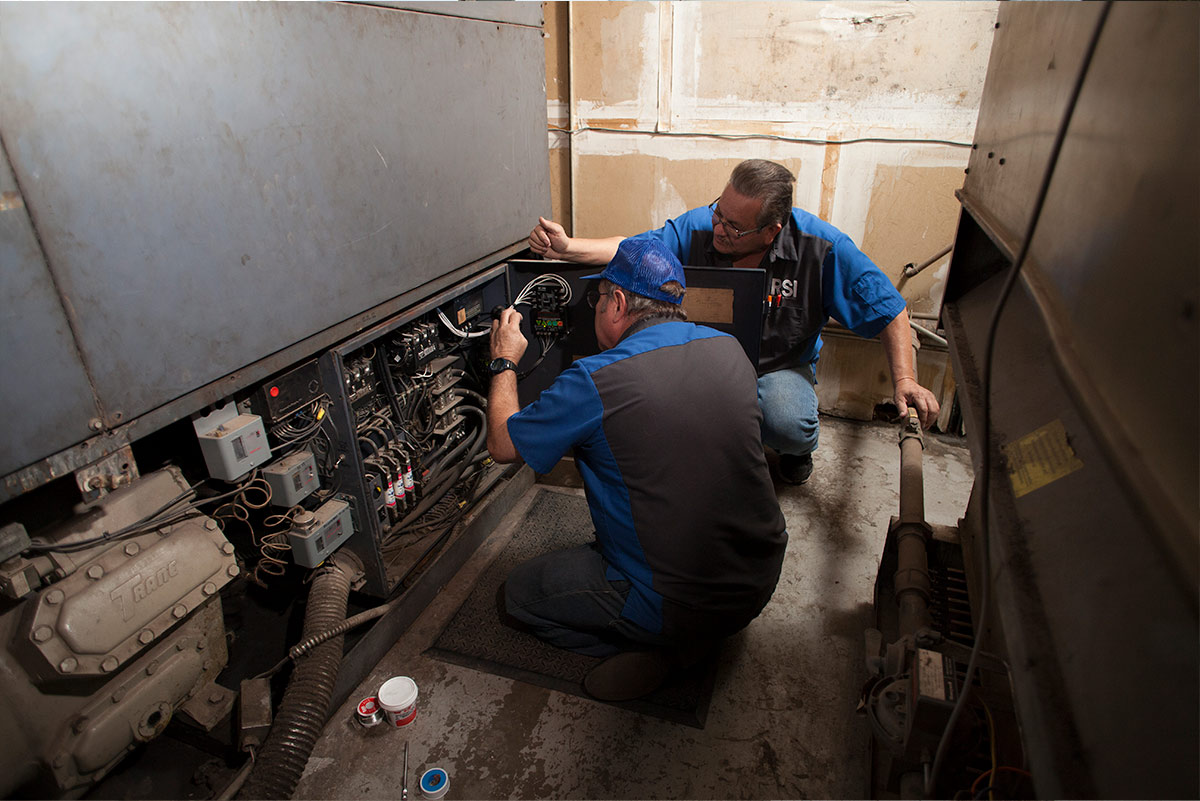
Do you enjoy taking things apart and putting them back together? Do you have an inquisitive mind? If so, consider a career in HVAC/R. The Refrigeration School (RSI) offers a Refrigeration Technologies program that teaches you about heating, ventilation, air conditioning, and refrigeration. A chiller is one of the important technologies you will learn about in this program. So, what is a chiller?
What is a Chiller?
A chiller is a refrigeration system used to lower the temperature in a refrigerator by removing heat from the system and transferring it out of the vents in the back of the refrigerator. A basic chiller1 is made up of:
Condenser – eliminates heat from the refrigerator by circulating water between the cooling tower and the condenser.
Compressor – generates the pressure necessary to push refrigerant around the chiller unit.
Evaporator – located between the expansion valve and condenser to remove heat from circulating refrigerant.
Get Started on the Path to a New Career
Fill out our form to learn how we can help you change your life.
Expansion Valve – located between the compressor and evaporator to expand the refrigerant passing through them to eliminate heat from the evaporator.
Power Unit – controls the electrical energy used by the chiller.
Control Unit – regulates the entire cooling process.
Water Boxes – conduct water flow effectively.
Different types of chillers include:
Centrifugal Chiller2 – includes an evaporator, compressor, condenser, and expansion device with rotating impellers that compress the refrigerant and move it around the chiller. It uses the vapor compression cycle to chill water. Centrifugal chillers are popular because they have a limited number of moving parts. Plus, they offer high cooling capacity with a smaller footprint.
Reciprocating Chiller3 – designed to work in humid conditions- is water-based and energy-efficient. A couple of types of reciprocating chillers are air-cooled and water-cooled chillers.
- Air-Cooled Chillers – send air to the heat exchanger and cool the refrigerant in the air. The refrigerant in the compressor is cooled by a condenser and turned into a liquid state. When the liquid refrigerant passes through the expansion valve, the pressure is reduced and becomes a gas, allowing the chiller to cool the water.
- Water-Cooled Chiller – comprised of an evaporator, absorber, regenerator and condenser to produce chilled water with pressure control.
Absorption Chiller – cools the inside of a refrigerator by removing heat from around the cooling unit.
What is a Chiller Used For?
Chillers are used when a strict operational temperature is required. This includes refrigerators, machinery, and industrial spaces. A chiller uses room-temperature air and water to maintain a constant temperature. Typically associated with cooling, it can be used for heating. Some of the specific industries that use chillers include:
Food Processing – food production and processing systems use industrial chillers because of their precision in temperature control.
Metal Finishing – temperature control is essential in electroplating and electroless plating to remove heat to bond the metals at the right temperature.
Injection Molding – create plastic parts using an injection molding machine, thermoplastic pellets, and a mold. The process must maintain a precise temperature to prevent cracks and warping in the plastic.
Space Cooling – Manufacturing plants generate heat; a chiller helps prevent extreme temperatures in working spaces.
Final Thoughts
Did learning about centrifugal and reciprocating chillers interest you? If so, it is time to learn more about the Refrigeration Technologies program at RSI. In as little as six months, you can become an HVAC/R apprentice and start working on chillers in restaurants, manufacturing plants, and other industrial spaces. We offer flexible day and evening classes and real-world training. Ready to move forward? RSI is here to help.
Want To Learn More?
Ready to start your new career at one of the best schools for HVAC in Phoenix? Because HVAC is a hands-on job, technical training is typically required for anyone to enter this field. Many people invest in a trade program to learn the trade skills they need to be safe and effective as a professional. To learn more about our HVAC program offered at the Phoenix, AZ campus, contact us at The Refrigeration School or call 1-888-671-5803.

